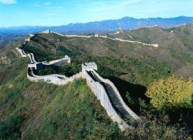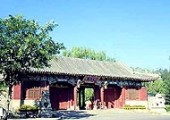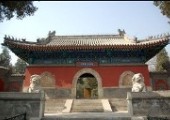Sections of Great Wall

There are three major sections of the Great Wall open to tourists near Beijing: Badaling, Mutianyu and Simatai. All three are built on steep terrain so it's a good idea to wear comfortable shoes and bring water. This advice holds especially true when gong to the Simatai section or to the "Wild Wall" sections that haven't been restored. Many ex-pats enjoy hiking along the "Wild Wall" but it's not for the faint of heart: climbing conditions can be arduous and there are no signposts, so hikers will need a good map or a guide.
Badaling Section: Only 70km away by superhighway, Badaling is the closest section of the Great Wall to Beijing and can be visited in half a day. Moreover, its proximity to the Ming Tombs means both sites can be seen in single outing.
Mutianyu Section: It is located some 90km north of Beijing, and like Badaling, is a recently renovated section that's very popular. Once on top, the view of the Wall undulating down wooded canyons and up mountain ridges are breathtaking.
Simatai Section: It is a dramatic testimony to Ming engineering skills with one section as steep as 85 degrees. Only partially restored, Simatai allows athletic visitors who climb past the first watchtowers to see the Wall in its wild, crumbling state.
Different sections of Great Wall
Badaling Great Wall Mutianyu Great Wall
Huangyaguan Great Wall Jinshanling Great Wall
Simatai Great Wall Juyongguan Great Wall
Jiayuguan Great Wall Overhanging Great Wall
Gubeikou Great Wall
History of the Great Wall Marathon
1999 2000 2001 2002 2003 2004 2005 2006 2007 2008 2009 2010 2011
Great Wall Marathon + China tour packages
5 days - Great Wall Marathon + Beijing tours
11 days - Great Wall Marathon and Classic China tour
12 days - Great Wall Marathon with Yangtze Cruise
16 days - Great Wall Marathon with Tibet Tour




